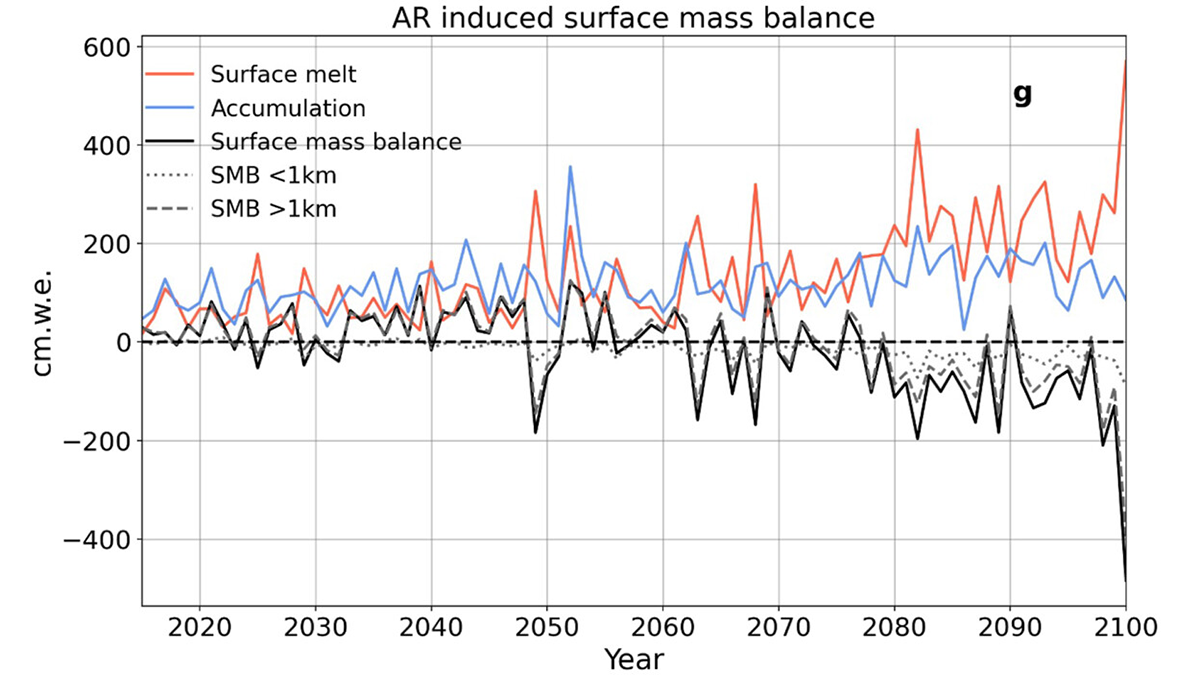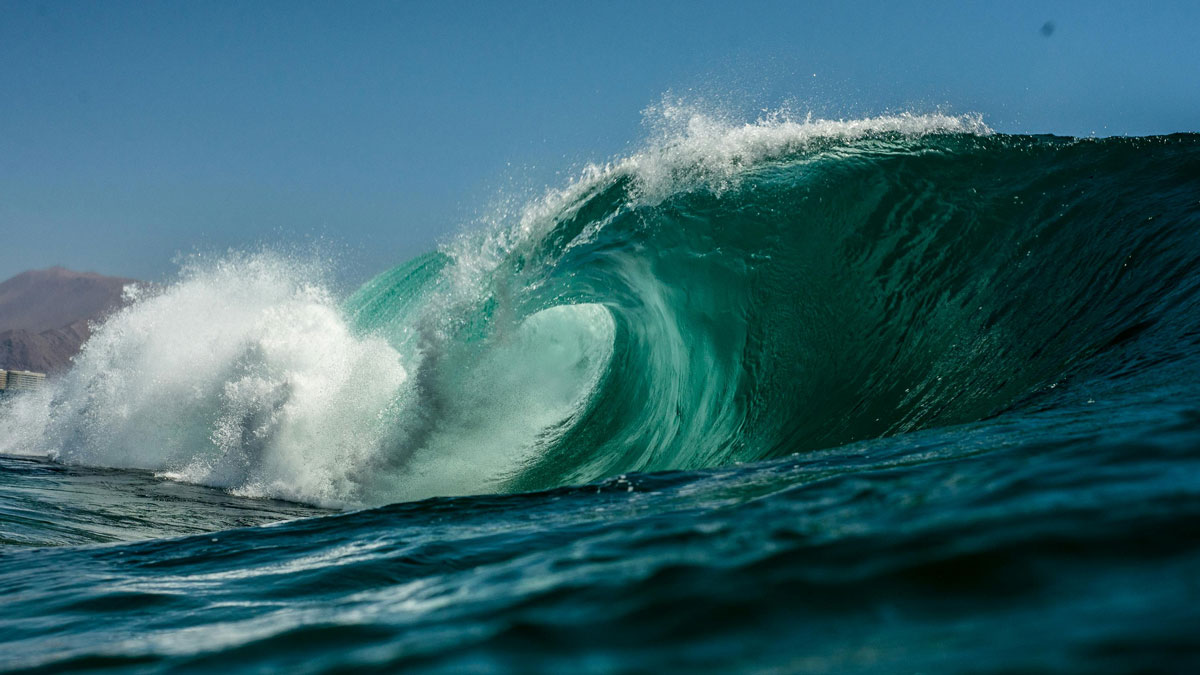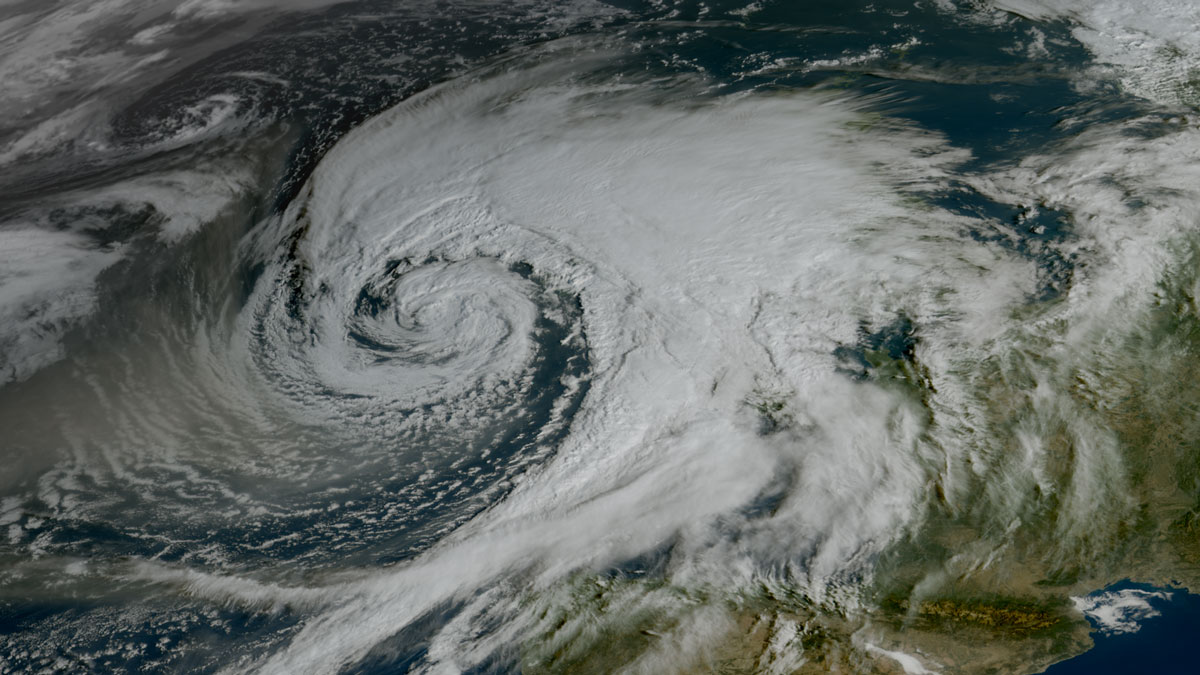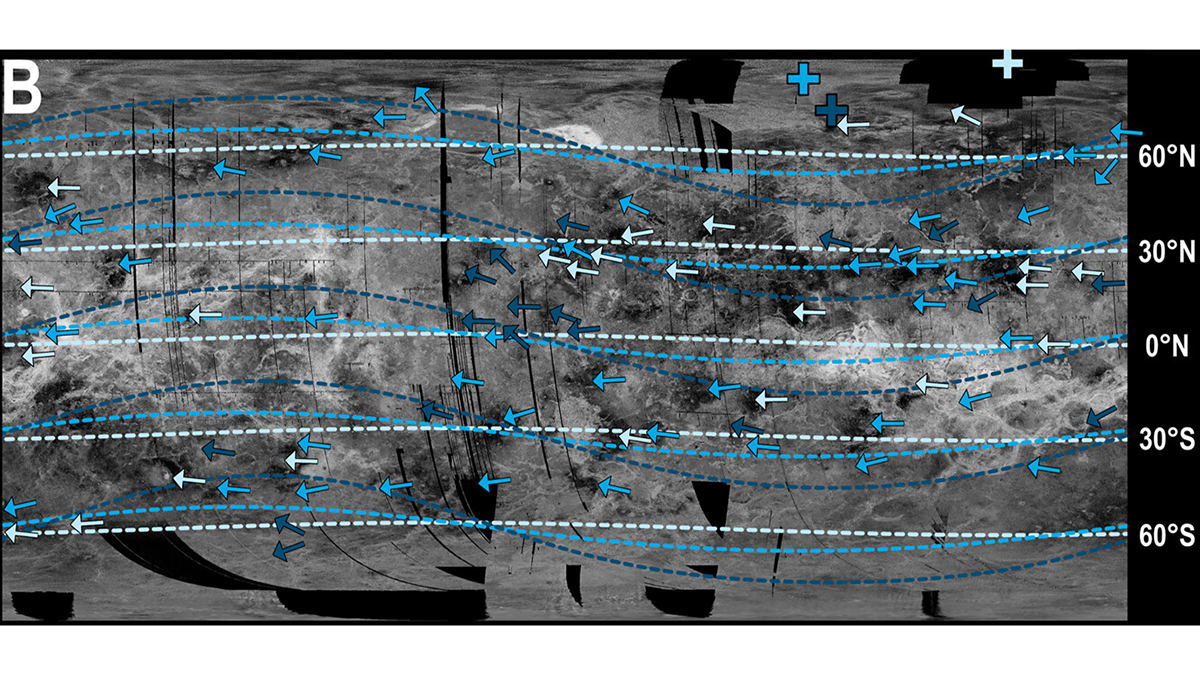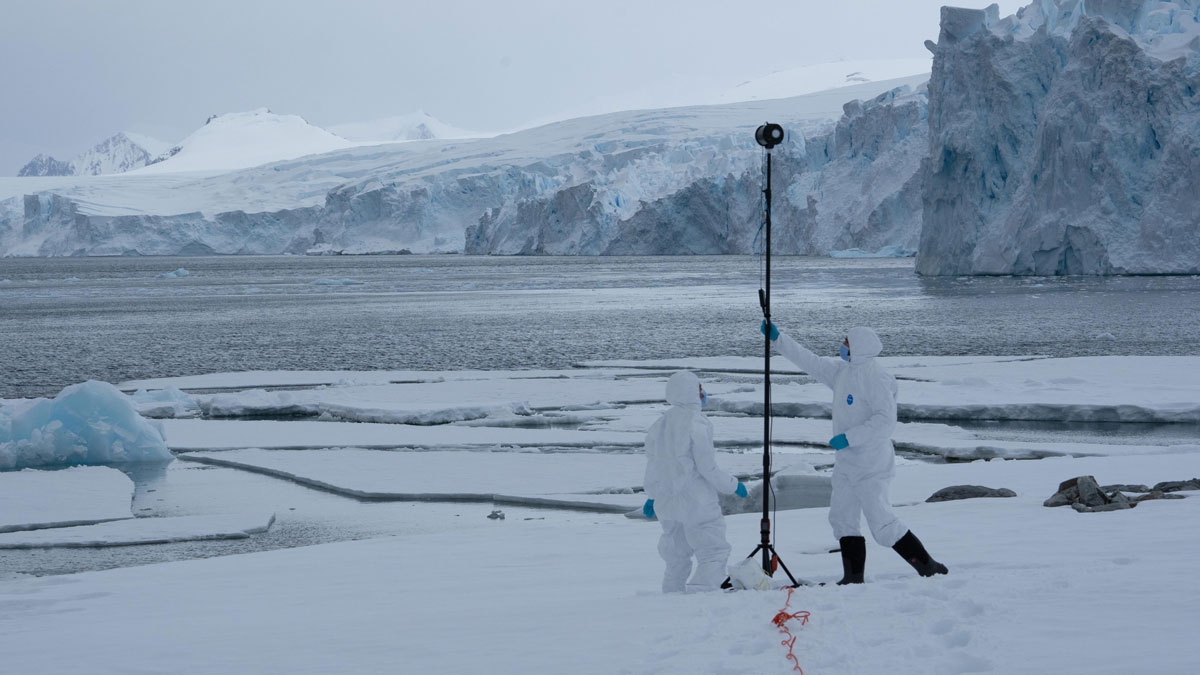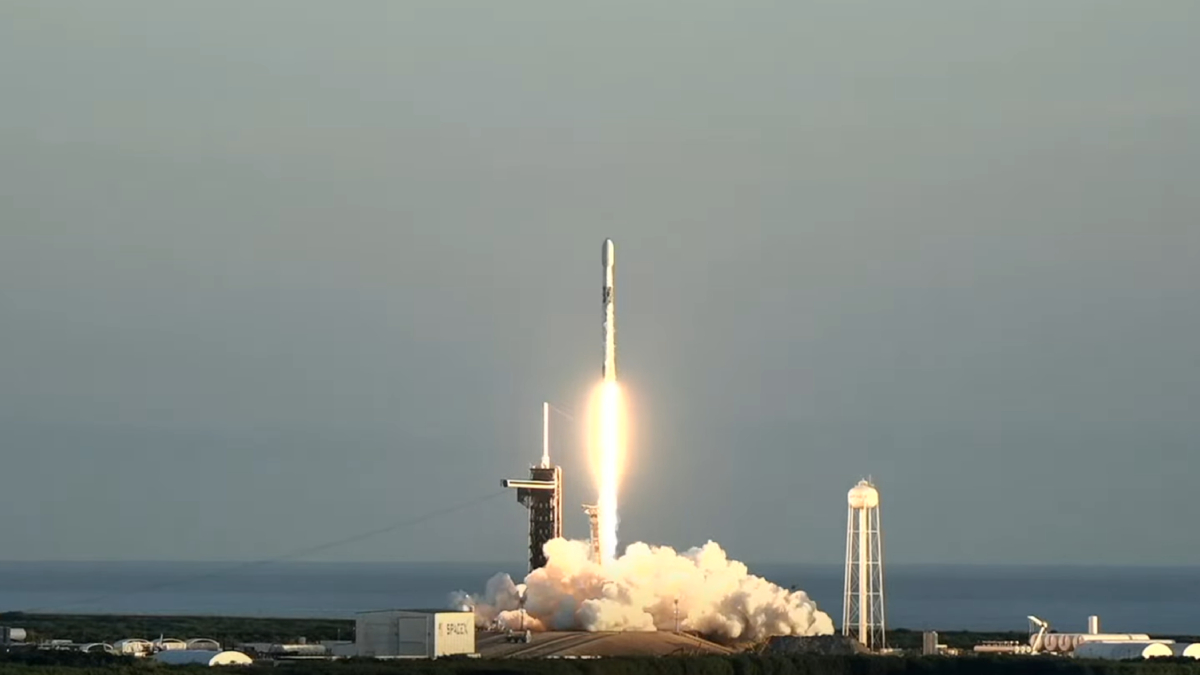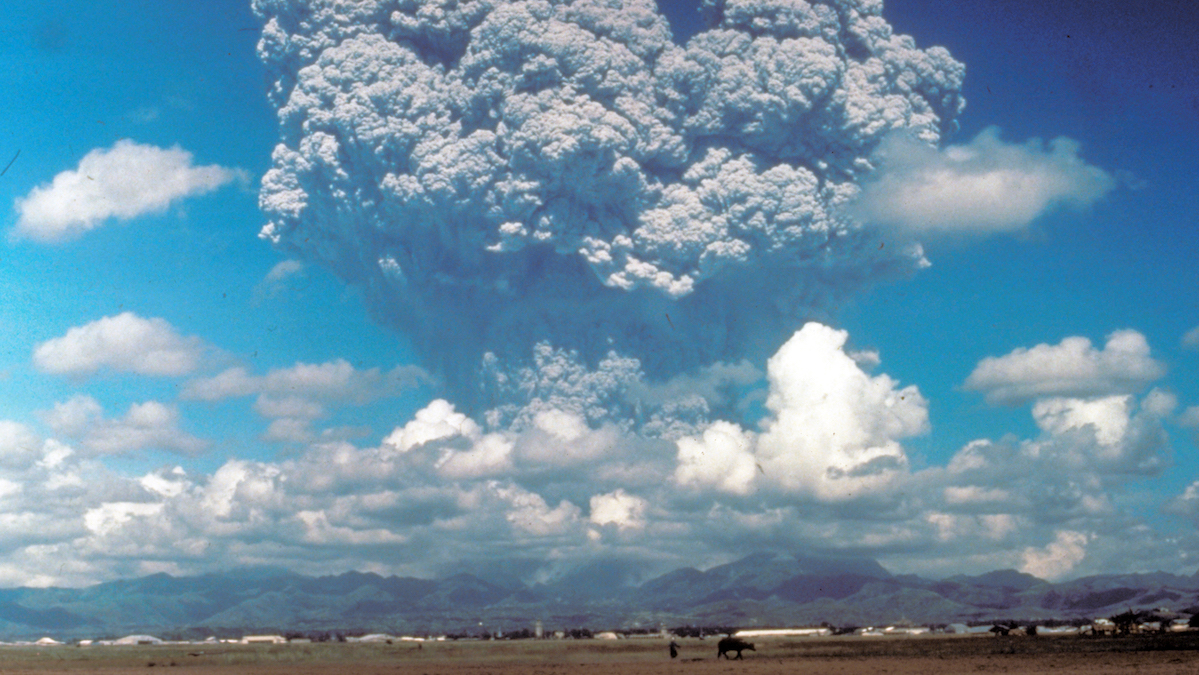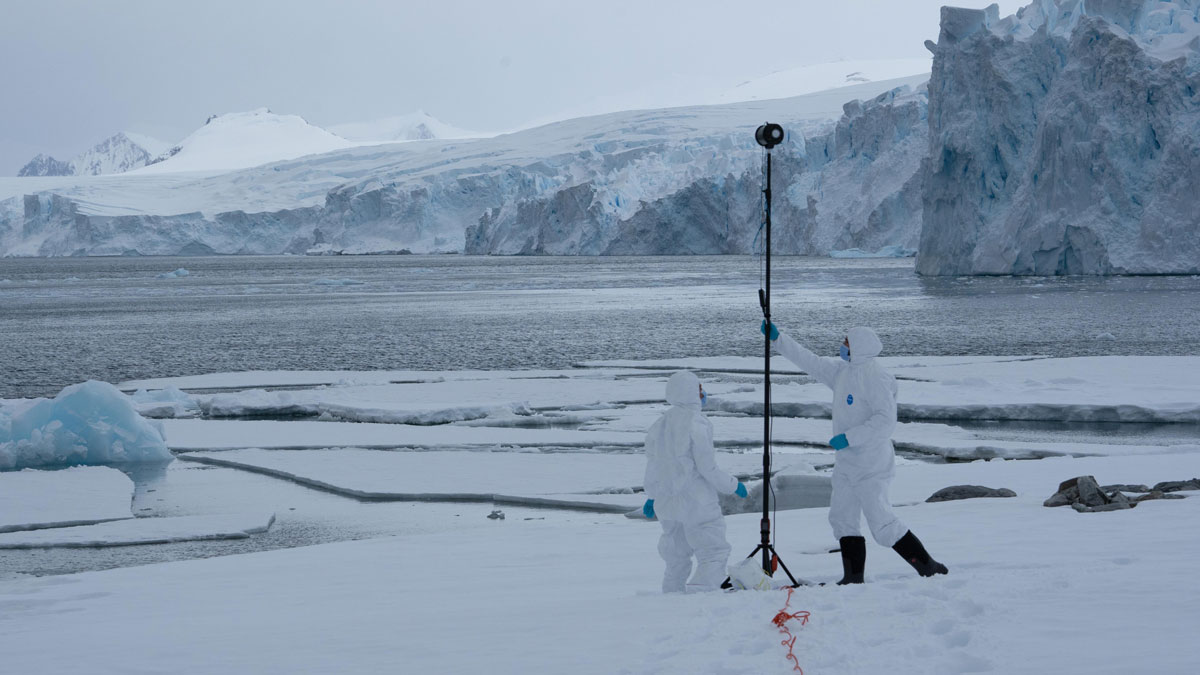New simulations reveal how atmospheric rivers influenced Greenland’s ice sheet during the Last Interglacial—offering clues to future melt in a warming world.
everything atmospheric
Scientists Tune In to the Ocean’s Sound Waves
A new technique detects inaudible acoustic signals from crashing waves, opening up possibilities for monitoring sea and atmospheric conditions from shore.
A Step Toward AI Modeling of the Whole Earth System
Coupling an AI-driven model of the atmosphere with a model of the ocean could help scientists create highly efficient emulations of the entire Earth system.
The AI Revolution in Weather Forecasting Is Here
The past decade has seen explosive growth in forecasting research and applications using AI. Sophisticated new approaches show vast potential to support public safety, health, and economic prosperity.
New Evidence for a Wobbly Venus?
The orientation of wind-blown impact deposits on Venus is not consistent with modeled wind directions, suggesting Venus’s rotation axis may have changed.
Trio of Space Weather Satellites Take Flight
These three satellites will that study the solar wind and its impacts.
Volcanic Eruptions in One Hemisphere Linked to Floods in the Opposite One
Asymmetric volcanic plumes may shift equatorial weather patterns and increase tropical stream flow, according to new simulations.
¿Pueden los microorganismos prosperar en la atmósfera terrestre o simplemente sobreviven allí?
Un enfoque de modelización ascendente podría acercar a los científicos a la comprensión de las comunidades de microbios en la atmósfera.
Quantifying Predictability of the Middle Atmosphere
A new high-resolution global model is used to study predictability of atmospheric circulation from the surface to 120 kilometers.

